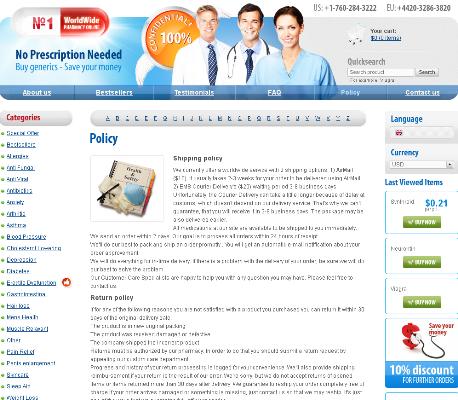Levofloxacin Vs. Other Antibiotics: What Sets It Apart?
Mechanism of Action and Bacterial Susceptibility
Levofloxacin operates as a fluoroquinolone antibiotic, targeting bacterial DNA gyrase and topoisomerase IV enzymes, essential for DNA replication and repair. This dual-action mechanism enables it to combat a wide range of bacterial species effectively. Unlike many other antibiotics, levofloxacin maintains its efficacy even against antibiotic-resistant strains, making it a critical component of the medical arsenal, particularly when a treatment must be administered stat.
Through its potent action, levofloxacin is instrumental in treating both Gram-positive and Gram-negative bacteria. Its streamlined mechanism allows it to efficiently penetrate bacterial cells, disrupting essential processes and resulting in bacterial cell death. This advantage, combined with its broad-spectrum activity, distinguishes it from other antibiotics, making it a prime candidate in complex and multidrug-resistant infections.
| Features | Levofloxacin | Other Antibiotics |
|---|---|---|
| Targets | DNA Gyrase, Topoisomerase IV | Varies (Protein Synthesis, Cell Wall Synthesis, etc.) |
| Effectiveness | High against resistant strains | Varies, often affected by resistance |
| Spectrum | Broad (Gram-positive and Gram-negative) | Narrow to broad, depending on the antibiotic |
Spectrum of Activity: What Pathogens It Targets

Levofloxacin distinguishes itself with a broad and potent spectrum of activity. Unlike many generics, it efficiently targets a wide range of pathogens. This includes gram-positive bacteria like Streptococcus pneumoniae, responsible for various respiratory infections, and gram-negative bacteria such as Escherichia coli, a common culprit in urinary tract infections. Beyond these, levofloxacin is also effective against certain atypical bacteria and anaerobes, making it a versatile weapon in the pharmacist's arsenal, particularly handy in the fast-paced environment of a Drive-Thru pharmacy.
This robust coverage allows for fewer instances of therapeutic substitution since levofloxacin often covers infections that might otherwise require a cocktail of antibiotics. By streamlining treatment, healthcare professionals can follow the sig more straightforwardly, enhancing patient compliance and reducing the burden of side effects typically associated with polypharmacy.
Pharmacokinetics: Absorption, Distribution, and Elimination
Levofloxacin displays impressive pharmacokinetics that make it a powerhouse in the antibiotic world. Upon ingestion, it achieves excellent absorption with peak plasma concentrations reached relatively quickly. This allows for efficient delivery of the compound medication to the site of infection. Unlike some other antibiotics that require a 'Fridge Drugs' status, levofloxacin remains stable at room temperature, facilitating ease of use.
Once absorbed, levofloxacin is distributed evenly throughout the body, including in tissues and fluids where bacteria may lurk. This wide distribution enhances its ability to combat infections comprehensively. Its elimination primarily involves renal pathways, which means it is excreted through the urine, making it particularly effective for urinary tract infections.
The convenience of a once-daily dose helps with patient compliance, a crucial factor in the efficacy of antibiotics. This streamlined 'Sig' ensures that patients adhere to their prescribed course, thus reducing the likelihood of complications or resistance. In comparison to other antibiotics that may require more frequent dosing or have complex instructions, levofloxacin stands out for its user-friendly regimen.
Common and Severe Side Effects Compared

When comparing the side effects of levofloxacin with other antibiotics, it's essential to focus on both common and severe reactions. Like other antibiotics, levofloxacin can cause nausea, diarrhea, and headaches. However, it is also known for more severe adverse effects. These can include tendon rupture, a risk not commonly associated with most antibiotics. Another significant concern is its potential to prolong the QT interval, leading to serious cardiac issues.
Patients should be aware of potential severe side effects, such as peripheral neuropathy and CNS effects, like confusion or hallucinations. While other antibiotics may have their own risks, the severity and scope of these side effects highlight the importance of following the Sig on a prescription closely. The presence of these risks can make some patients feel the "label sticker shock" when comparing to other scripts.
Levofloxacin's severe side effects have led to stricter guidelines surrounding its use. This is especially pertinent in settings like a Drive-Thru pharmacy, where pharmacists must be vigilant in counseling patients quickly. Therefore, before starting any antibiotic, especially levofloxacin, a thorough discussion with a healthcare provider about its risks and benefits is crucial.
Efficacy in Treating Respiratory and Urinary Infections
Levofloxacin has shown significant efficacy in treating respiratory infections, particularly community-acquired pneumonia and chronic bronchitis exacerbations. This broad-spectrum antibiotic has a high affinity for lung tissue, enhancing its effectiveness against respiratory pathogens. Patients often find that following the prescribed Sig for levofloxacin leads to rapid symptom relief. The drug's strong penetration capabilities also make it a reliable option for serious infections where immediate intervention, or a "stat" script, is necessary.
When it comes to urinary infections, levofloxacin stands out due to its exceptional pharmacokinetic properties. It is well-absorbed and achieves high urinary concentrations, making it effective against bacteria lurking in the urinary tract. In acute pyelonephritis and complicated urinary tract infections, having a hard copy script for levofloxacin often results in quicker patient recovery compared to other antibiotics.
However, its efficacy must be weighed against potential side effects and the risk of resistance. In many cases, levofloxacin is chosen for its broad-spectrum activity, especially when compounding the need to treat both respiratory and urinary infections simultaneously. Below is a comparison table showcasing levofloxacin's efficacy:
| Infection Type | Efficacy of Levofloxacin |
|---|---|
| Respiratory Infections | High |
| Urinary Infections | High |
Cost and Accessibility: How It Compares
When considering levofloxacin's cost and accessibility, it stands out among antibiotics. Unlike some specialized compounds, levofloxacin is often available as a generic, making it more affordable for many patients. This factor significantly reduces the sticker shock commonly associated with branded medications. Its inclusion in numerous formularies ensures widespread insurance coverage, reducing the chances of an insurance reject. Furthermore, levofloxacin's availability in both tablet and liquid forms enhances its accessibility, catering to different patient needs.
Many pharmacies feature levofloxacin in their inventories, whether at a drive-thru or inside Pharm Land, enhancing convenience for patients. When compared to other antibiotics, the cost-effectiveness of levofloxacin is notable. Patients benefit financially from its availability as an on-the-counter option, saving on out-of-pocket expenses, especially in comparison to newer, specialized antibiotics.
Healthcare systems also appreciate levofloxacin due to its broad-spectrum utility and cost-effectiveness. The reduced financial burden on both patients and healthcare providers is significant. Moreover, its widespread use and inclusion in various health plans and pharmacy chains make it a go-to choice for effective treatment without the hassle of prior authorization or high-cost burden. Thus, levofloxacin holds a prominent place in the antibiotic landscape for its balanced cost and accessibility.



